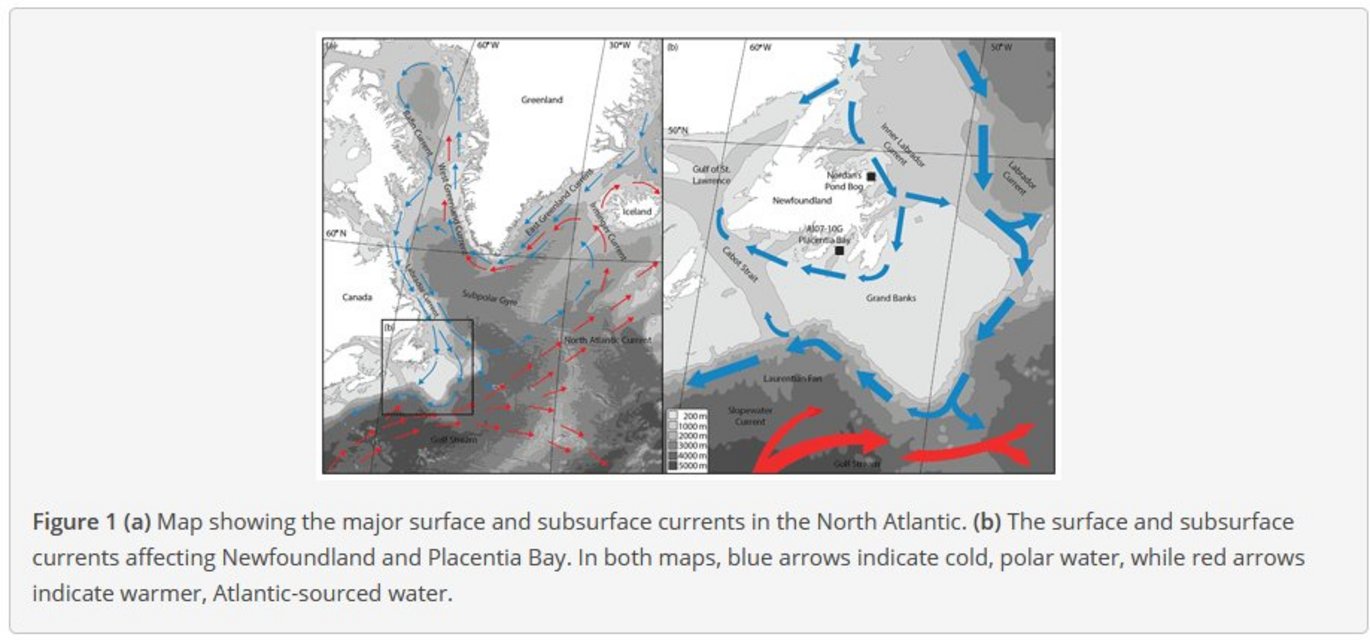Ultra-distal tephra deposits and Bayesian modelling constrain a variable marine radiocarbon offset in Placentia Bay, Newfoundland
New publication by Monteath, Alistair J. ; Bolton, Matthew S.M. ; Harvey, Jordan et al.

Abstracts:
Radiocarbon dating marine sediments is complicated by the strongly heterogeneous age of ocean waters. Tephrochronology provides a well-established method to constrain the age of local radiocarbon reservoirs and more accurately calibrate dates. Numerous ultra-distal cryptotephra deposits (non-visible volcanic ash more than 3000 km from source) have been identified in peatlands and lake sediments across north-eastern North America and correlated with volcanic arcs in the Pacific north-west. Previously, however, these isochrons have not been identified in sediments from the north-west Atlantic Ocean. In this study, we report the presence of two ultra-distal cryptotephra deposits; Mazama Ash and White River Ash eastern lobe (WRAe), in Placentia Bay, North Atlantic Ocean. We use these well-dated isochrons to constrain the local marine radiocarbon reservoir offset (ΔR) and develop a robust Bayesian age–depth model with a ΔR that varies through time. Our results indicate that the marine radiocarbon offset in Placentia Bay was years (relative to the Marine20 calibration curve) at the time of Mazama Ash deposition (7572 ± 18 yr BP) and −396 ± 144 years at the time of WRAe deposition (1098–1097 yr BP). Changes in ΔR appear to coincide with inferred shifts in relative influences of the inner Labrador Current and the Slopewater Current in the bay. An important conclusion is that single-offset models of ΔR are easiest to apply and often hard to disprove. However, such models may oversimplify reservoir effects in a core, even over relatively short timescales. Acknowledging potentially varying offsets is critical when ocean circulation and ventilation characteristics have differed over time. The addition of tephra isochrons permits the calculation of semi-independent reservoir corrections and verification of the single ΔR model.
